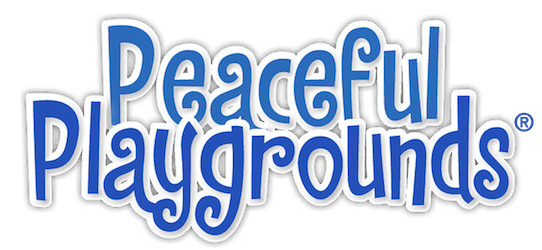July 2010
By Mary Spicer
Tribune – Meadville, PA
 It’s summertime, when the livin’ is supposed to be easy. With the midpoint of the summer vacation season rapidly approaching; however, easy has a way of slipping over the border into boring, especially for those not quite old enough to independently head off in search of adventure.
It’s summertime, when the livin’ is supposed to be easy. With the midpoint of the summer vacation season rapidly approaching; however, easy has a way of slipping over the border into boring, especially for those not quite old enough to independently head off in search of adventure.
Get your sidewalk chalk ready; as a model for organized outdoor activities in general, components of a program recently implemented throughout Penncrest School District to actively involve elementary students in outdoor activities just might come in handy.
Developed at a California elementary school 15 years ago by a principal seeking to get children moving during recess. Instead of waiting for a turn or just standing around talking, the Peaceful Playgrounds program soon revealed that all that activity had some very useful side effects. For example, when chaotic energy turned into calm, focused cooperation, the playground injury rate plummeted. Ditto for stress and conflict.
Today, with a Peaceful Playgrounds Program Kit containing key ingredients such as stencils, activity guides and blueprints readily available, more than 8,000 schools have implemented the program nationwide.
In Penncrest, the program quickly became a hit. Eight-year-old Rhianna Eakin, a rising third-grader at Cambridge Elementary School, recalls that before the games were painted on, a few kids — mostly boys — played soccer and maybe a little football during recess, but “everyone else kind of just walked around.” With game courts in place, however, Eakin and her classmates actually started playing together — and she found herself liking recess a whole lot more.
That, according to guidance counselor Vickie Morfenski, is a very big deal.
When the district was implementing its overall bullying prevention program, a survey was given to all the students. When district administrators analyzed the results, “they discovered that the playground was the number-one hot spot for bullying activity,” Morfenski said. “This is why we went forward to put this Peaceful Playground in place.”
Out of the Playground, Into the Hood
For anyone in the vicinity of Cambridge Springs, Maplewood or Saegertown elementary schools, the most obvious sign of the Peaceful Playground program is the distinctive game markings that have been painted on the asphalt playgrounds at all three locations. A 36-square alphabet grid — one letter per square — with each square big enough to land in with both feet, for example. A traditional hopscotch court. A beanbag-toss court with a tennis-style variation; a multi-use circle and a multi-use square; four-square and shuffleboard courts and even an alphabet trail, to name just a few.
It came as a major surprise to Morfenski to discover that kids today like to play the games she enjoyed playing during her own youth. “All it really takes to get them excited is to teach them how to play,” she said delightedly.
Todd Bodenmiller, a graduate student in Mercyhurst College’s organizational leadership program, has been working with Penncrest’s bullying intervention program as an Americorps Vista. His duties during the past year included implementing Peaceful Playgrounds, a key component of the district’s anti-bullying efforts.
“I’ve learned more about kids — how creative they can be,” he said, speaking of what he personally gained from all the quality time he spent on all three playgrounds. “We painted the designs and taught them the games, but some of the best games that they play are ones they’ve made up themselves.”
Learning How to Work it Out
Game markings, however, are only one of five components of the Peaceful Playground creed.
Conflict resolution teaches kids how to work out problems on their own. “Walk, talk, rock” is the operative phrase. “Walk away and play another game. Talk things out. Or use ‘rock, paper, scissors’ to settle things,” Bodenmiller explained. “By using all three, they can solve disagreements quickly.” Yes, he’s talking about the ‘rock beats scissors, scissors beats paper, paper beats rock — and do it all over again if both choose the same symbol’ hand game of yore.
Rules matter. “It’s important for kids to have a consistent set of rules,” Bodenmiller said. “The playground supervisor needs to know and set rules.”
Equipment must be readily available. “There has to be enough equipment, mainly balls and bean bags, to keep them busy,” Bodenmiller said. In other words, no waiting for one group to finish before another can begin.
Expectations must be clearly communicated. Players must know how to use ‘walk, talk, rock’ — and know that the procedures are going to be consistent from one playground period to another, Bodenmiller stressed.
Designs — the game markings — painted on the playground surface are a wonderfully inexpensive way to give kids more to do, he added.
Even though the program’s still in the introductory stage, Bodenmiller was already seeing his efforts come to fruition as the school year came to a close. “They’ve been playing over here for about 15 minutes,” he said, gesturing toward a large group of second-graders stationed one deep around the perimeter of the multi-use circle.
Tribune – Conflict Resolution & Physical Activity Drive Playground Program![]()

